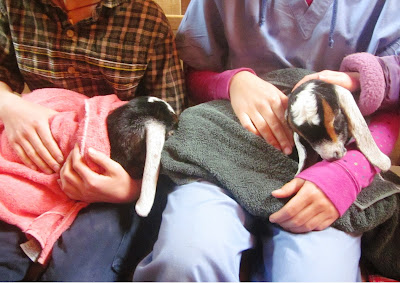Goat terms:
Buck/Billy - Mature male goatDoe/Nanny - Mature female goat
Kid - Baby goat
Buckling - Young or baby male goat
Doeling - Young female goat
Yearling - A one year old goat
Wether - A male goat that has been "fixed" or castrated
Sire - A goat's father
Dam - A goat's mother
Freshener - Female goat that has given birth
Events:
Kidding Season - The time of the year that kids are born, usually from February to JuneKidding/Freshening - This is what it is called when a doe gives birth
Disbudding - The removal of horn buds on a kid
Lactation - The time during which a doe is producing milk
Parts of a goat:
Udder - The main part of a doe's mammary system. It is like a "bag" with two separate sides and two teatsTeat - The part of the udder that the milk is squeezed out of
Wattles - Small lobes of skin on a goats neck. If a goat has wattles there will usually have two, one on each side, but they can appear anywhere on a goats body.
.jpg)

.jpg)


.jpg)
.jpg)
.jpg)